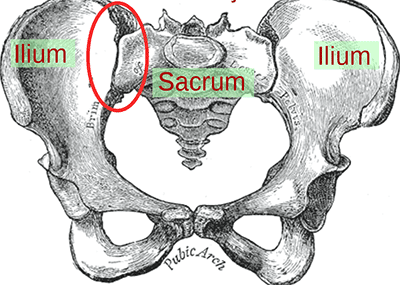For those who have been diagnosed with a chronic disease, you know it can be quite the process. And ankylosing spondylitis (AS) is no exception, especially because its symptoms can be tricky to diagnose. It’s not unusual for patients to go months or even years before receiving an ankylosing spondylitis diagnosis from a medical professional.
Ankylosing spondylitis can appear in a number of joints, but most often, it first appears in the sacroiliac joint between the spine and pelvis, which can cause pain in the buttocks, lower back, and hips. But it’s also possible to feel symptoms in your neck, arms, or legs, according to an Arthritis-health blog.

Another reason it can be hard to diagnose is the sheer fact that it’s a system-wide disorder. Beyond affecting joints, it can also affect organs like the lungs, heart, or eyes. These reasons—the lack of connection between systems—makes it a hard disease to diagnose.
Here are five symptoms that make diagnosing ankylosing spondylitis difficult:
- About 40% of people with ankylosing spondylitis will experience acute or chronic iritis, meaning inflammation of the eye’s iris. Symptoms to look out for include: pain in or around the eye, pupil redness or difference in size, sensitivity to light, and blurred vision.
- Chest pain is another symptom of ankylosing spondylitis. Joints become inflamed and fuse together, and when this happens it can be extremely painful, especially if the ribs become inflexible and the lungs constrict. Because heart problems can be another symptom of this disease, it’s important talk to your doctor if you do begin to experience chest pain.
- Though it’s an extremely rare symptom—only affecting 2% of people with AS—inflammation at the site where the aorta meets the heart can cause heart lesions.
- AS symptoms can also include cauda equine syndrome. Not sure what that is? It’s the bundle of nerves that exit the bottom of the spine that and, when inflamed, become compressed. Cauda equine syndrome is a medical emergency, and symptoms can include incontinence, numbness in the legs, trouble balancing, and trouble speaking. If you experience any of these symptoms, seek medical help immediately.
- Like AS, the symptoms of AA amyloidosis can be hard to pin down. AA amyloidosis is a symptom of AS where a bone marrow protein builds up in the organs of the body—the kidneys, heart liver, or digestive track.
Because it’s no easy disease to diagnose, it’s most important to get with your doctor if you experience any of these symptoms. Though nobody would prefer an AS diagnosis, there are common treatments that include pain management, exercise, and even tips to help with your sex life.
For more information, read the original blog featured in arthritis-health.com, “Spotting 5 Tricky Ankylosing Spondylitis Symptoms.”
Although doctors are starting to diagnosis AS in larger numbers, work still needs to be done. Share this article to help get people off the couch and in the doctor’s office if some of these symptoms show up.


